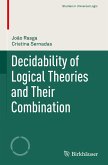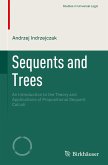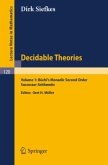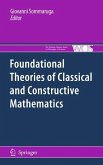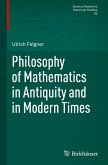This textbook provides a self-contained introduction to decidability of first-order theories and their combination. The technical material is presented in a systematic and universal way and illustrated with plenty of examples and a range of proposed exercises.
After an overview of basic first-order logic concepts, the authors discuss some model-theoretic notions like embeddings, diagrams, and elementary substructures. The text then goes on to explore an applicable way to deduce logical consequences from a given theory and presents sufficient conditions for a theory to be decidable. The chapters that follow focus on quantifier elimination, decidability of the combination of first-order theories and the basics of computability theory.
The inclusion of a chapter on Gentzen calculus, cut elimination, and Craig interpolation, as well as a chapter on combination of theories and preservation of decidability, help to set this volume apart from similar books in the field.
Decidability of Logical Theories and their Combination is ideal for graduate students of Mathematics and is equally suitable for Computer Science, Philosophy and Physics students who are interested in gaining a deeper understanding of the subject. The book is also directed to researchers that intend to get acquainted with first-order theories and their combination.
After an overview of basic first-order logic concepts, the authors discuss some model-theoretic notions like embeddings, diagrams, and elementary substructures. The text then goes on to explore an applicable way to deduce logical consequences from a given theory and presents sufficient conditions for a theory to be decidable. The chapters that follow focus on quantifier elimination, decidability of the combination of first-order theories and the basics of computability theory.
The inclusion of a chapter on Gentzen calculus, cut elimination, and Craig interpolation, as well as a chapter on combination of theories and preservation of decidability, help to set this volume apart from similar books in the field.
Decidability of Logical Theories and their Combination is ideal for graduate students of Mathematics and is equally suitable for Computer Science, Philosophy and Physics students who are interested in gaining a deeper understanding of the subject. The book is also directed to researchers that intend to get acquainted with first-order theories and their combination.


